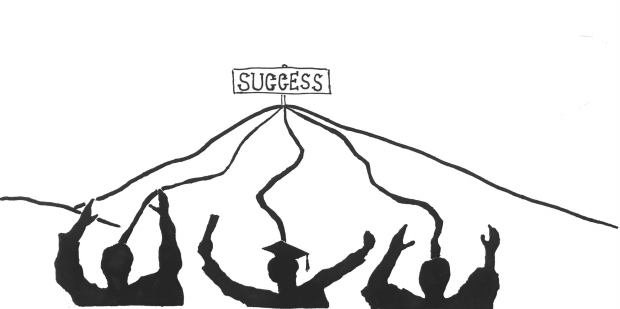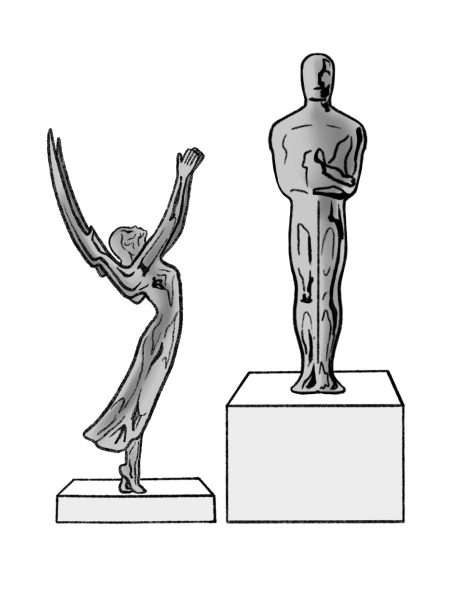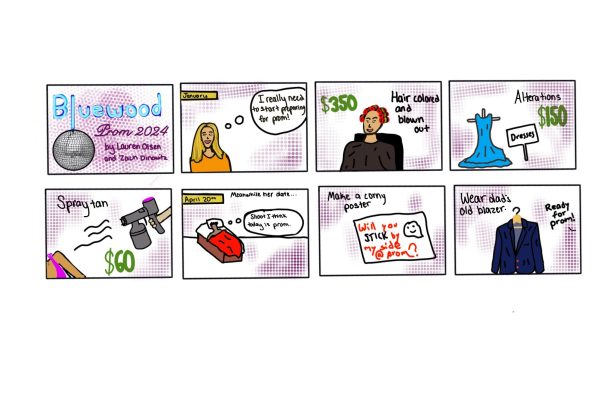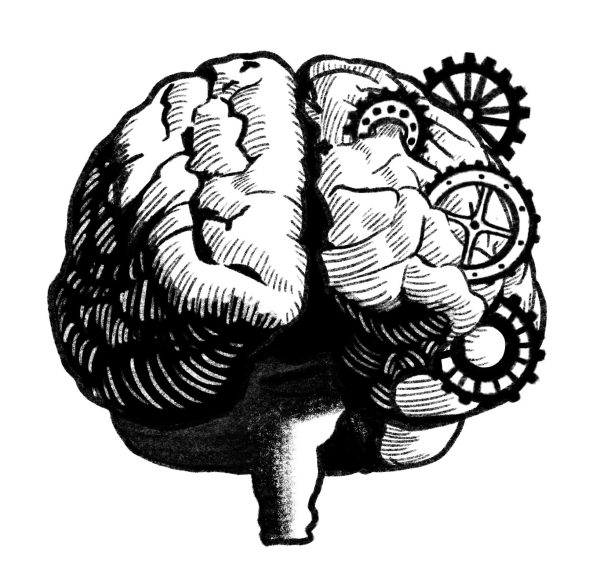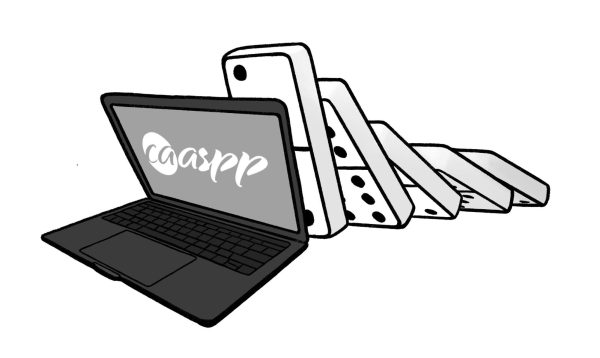Editorial: In defense of the infamous college map
June 2, 2019
It’s difficult to claim that high school is not all about college when for many an acceptance letter from a prestigious school is seen as the end-all and be-all, a culmination of four years. When college decision announcements rival prom posts for Instagram feed prominence, the emphasis on college can be even more difficult to overlook. Even you may be combing through this Bark issue just to find out which kid from your kindergarten class is going to Harvard or Princeton this year.
The Bark isn’t an innocent bystander in fostering this mentality; our senior issue’s centerspread is traditionally a map of the United States depicting the seniors’ geographic changes after graduation. Although designed to commemorate success, it has also been perceived as a contributor to the intense pressure often accompanying the college admissions process.
Our intention, however, is not to create a manifestation of the competitive, high-stress college process, but rather to display a visual that offsets these excessive tensions. That stress is present for the majority of high school and our aim is not to reinforce it, but to reflect. Instead, the renamed “post-grad plans” map stands as a nostalgic recognition of the class of 2019’s collaborative successes: a chance to take a step back and acknowledge the long journey completed by this year’s graduates.
The equitable, straightforward nature of the map also alleviates some stigmas present in the college process. It’s an alphabetical arrangement of post-grad paths, and lists of student names are shared voluntarily—no one is forced to fork over their information so it can be published. The font size of school names is not determined by the number of zeros on its price tag; no distinctions between “good” or “bad” choices are presented on the map. It should be viewed simply as a unifying representation of the graduating class.
In the past, Bark post-graduation maps sometimes featured the names of all students attending colleges or universities first, then isolated employment, military service, internships and gap years at the end. Understandably, some took their placement as a sign that those other paths were perceived as inferior. This year, we organized the list in alphabetical order, regardless of whether the name of the “path” relates to school or not. It exhibits where the seniors are going, not necessarily what they are doing, as should be the goal with any geographic visual.
For non-seniors, the map acts as tangible reassurance that failing a chemistry lab quiz or getting a C in AP Euro is not the equivalent to an automatic failure in life—which high school competition can often make us forget. Though our culture has ingrained arbitrary stereotypes of the type of college path seniors choose, our map is a reassurance that everyone ends up somewhere. In a system skewed toward mainstream colleges, proof that unorthodox future options are realistic and attainable helps to widen the tunnel vision non-seniors might have.
And so, we encourage the community to view the map in its simplest terms. Its purpose is not to create an opportunity for asserting dominance in a mom’s book club. It’s not an invitation for judgement; rather, it functions as a singular congratulations to years of tireless, often underappreciated hard work.
Although it may seem as if the sole purpose of this editorial was to simply excuse Bark from any of the opposition surrounding the ethics of the college map, there is a more profound message to be heard. Students, no matter which path you end up on—whether that’s a military job, an Ivy League, an entrepreneurship, a pursuit of the arts or a community college—society’s misleading standards are not the definition of your success. Each and every graduate this year should see the post-grad map as a source of pride, as it signifies a transition from high school into an adult life full of tax paying and oil changing. With the right mindset and a strong sense of identity, each soon-to-be alum can achieve post-high school happiness and success.
Please, at least for the 10 minutes spent pouring over the names at the dinner table, put aside any prejudices or expectations and celebrate the work that each and every individual featured exerted to arrive at their decision.

